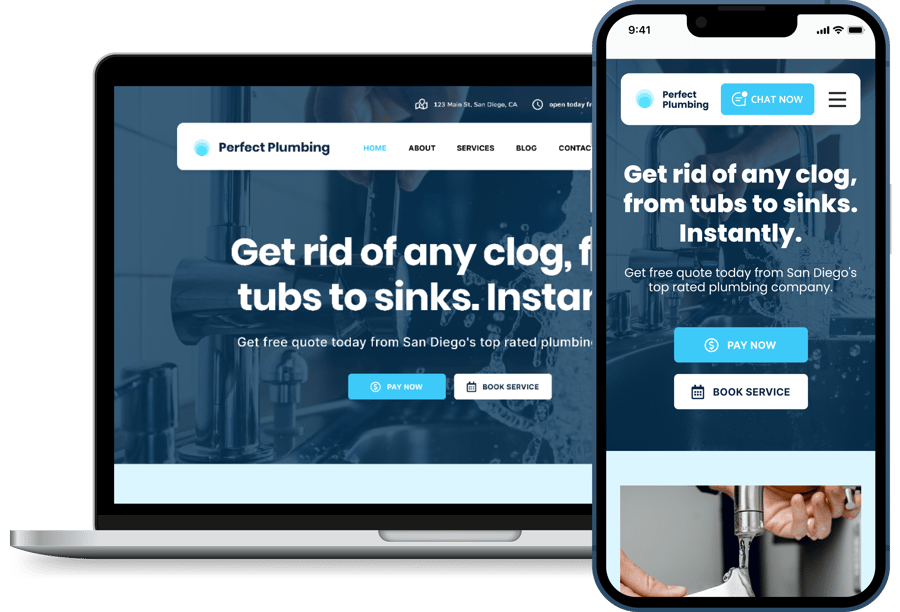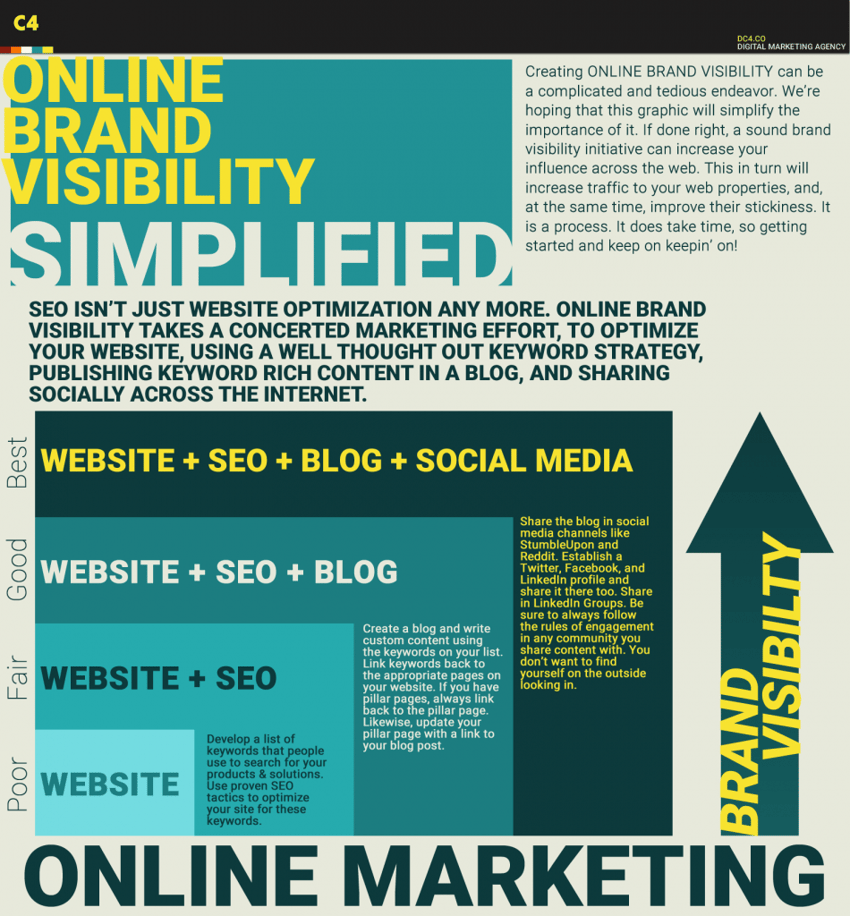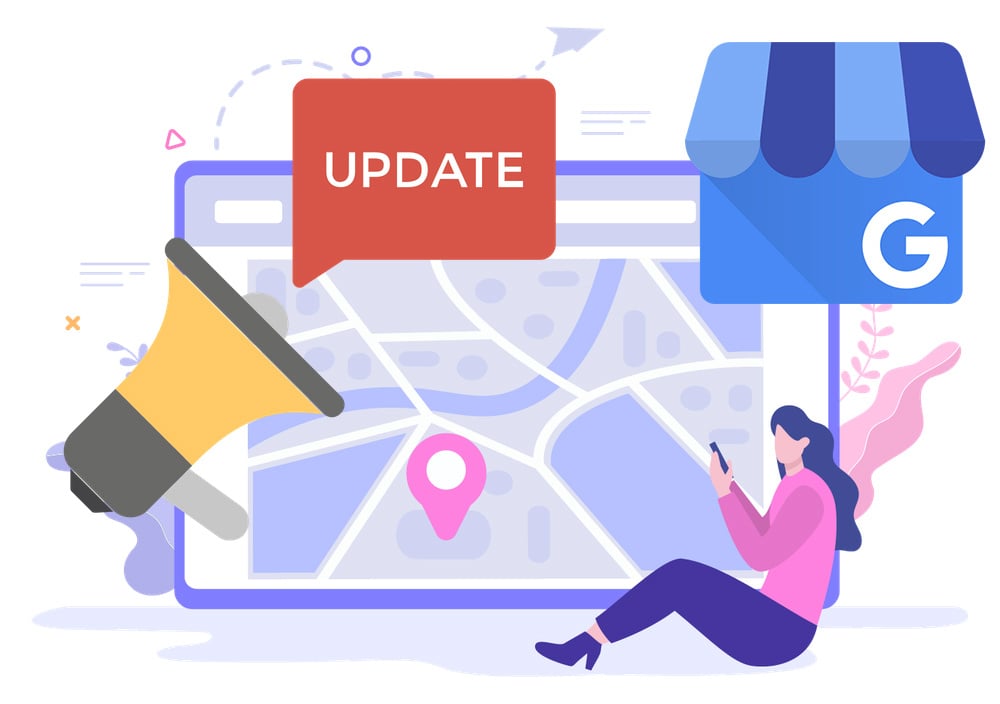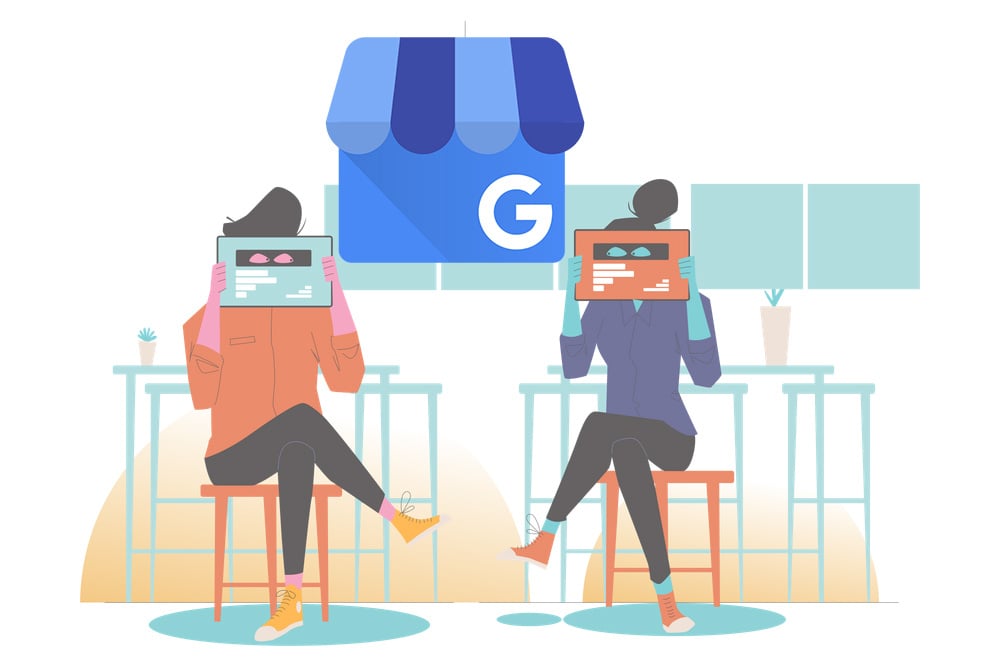Are you enjoying this blog?
To join our newsletter, text BLOG to (833) 779-2627 or enter your phone number 👉
Why Is a Website Important For Small Business?
Discover the benefits of having a website for small businesses and learn why establishing an online presence is crucial.

Jump to:
Intended Audience: Local Brick-and-Mortar Retail and Service Providers, NOT E-Commerce | Benefits of Having a Website for Small Businesses | Features to Consider When Building a Small Business Website | Steps to Create a Website for Your Small Business | Common Website Mistakes to Avoid for Small Businesses | How To Choose the Right Website Solution for Your Small Business Needs
Did you know that 35% of consumers use the internet to find local businesses several times a week?
But you might be wondering why a local provider would need a website, especially if you have a high volume of repeat customers and are well-known in your community. After all, your business doesn't rely on online sales like e-commerce stores.
However, small business websites can impact a company’s success and growth. It's not just about selling online— it's about being easy to find online, keeping your phone ringing, and staying connected with new and old customers alike.
Intended Audience: Local Brick-and-Mortar Retail and Service Providers, NOT E-Commerce
Website strategy is going to look a lot different if you’re building one for a local business versus an e-commerce business. As such, we want to clarify that this blog is intended for non-e-commerce entrepreneurs.

Source: GoSite Websites
If you’re an e-commerce business, checking out resources on major e-commerce platforms like Shopify and WooCommerce are going to be more beneficial for you than this blog.
But if you serve a community or region as a brick-and-mortar business or provide home and auto services (which are our favorite here at GoSite), this blog is for you.
| Local Small Business Website (Retail, Home, and Auto Services) | eCommerce Website | |
| Main Objective | To provide information about the business and encourage visitors to visit in-person or contact for services. | To sell products directly through the website. |
| Design & Navigation | Clear, simple design with easy-to-find information about location, hours, and contact details. | User-friendly design that makes it easy to browse and buy products. |
| Call to Action | Directions, Contact Us, Book an Appointment, Sign up for local events/news. | Add to Cart, Buy Now, Continue to Checkout. |
| Content | Details about services, testimonials, blog/news about local events, photo gallery. | Product descriptions, customer reviews, detailed shipping and return information. |
| Features | Contact form, map, opening hours, calendar of events, reservation or appointment booking system. | Shopping cart, customer account/login, payment gateway, product search and filters. |
| SEO | Local SEO is critical, focusing on local keywords and including location details. | Besides general SEO, also focuses on product-specific keywords and optimizing product images. |
| Mobile Responsiveness | Important, as many customers look up local businesses on their phone. | Critical, as a growing number of customers shop online using their phones. |
| Security | Basic website security is needed. | Higher security needs due to handling customer accounts, personal information, and payment details. |
| Updates & Maintenance | Less frequent, mainly for updating business info, news or events. | Regular updates for adding new products, updating stock levels, and announcing sales or deals. |
Benefits of Having a Website for Small Businesses
Now that you have an idea of how an ecommerce site is different from a local small business site, let's explore the benefits a well-designed website offers to small businesses like yours.
Increased Online Visibility and Reach
Consumers often turn to the internet to research, discover, and compare local businesses and services. A professional website helps your business appear high up in search results pages on Google, for example, helping potential customers find you quickly and effortlessly.
Source: Digital C4
Adding on search engine optimization (SEO) strategies like using specific keywords, having a regularly updated blog, and creating a strong social media presence strengthens your online brand visibility even more. This powerful combination allows your business to effectively reach the right audience and invite more potential customers to explore what you’re offering.
Business Credibility and Professionalism
An attractive, user-friendly site shows that you care about your business and are dedicated to meeting your customers' needs. It not only demonstrates that your business is keeping up with modern trends and technologies but also helps build trust with potential clients.
Effective Marketing Efforts and Lead Generation
Your website provides an ideal platform for sharing your brand's story and communicating the value of your products or services. A brand story is the unique narrative about your business that connects with customers emotionally and sets you apart from competitors.
Your website also lets you collect valuable customer information and build a dedicated audience base. You can then use this to develop targeted marketing campaigns and promote long-term relationships with your clients for increased sales and better business growth.
Showcasing Services and Products To Customers
Having a website is an excellent way to showcase your services and products to customers, both new and existing. You can add detailed descriptions, images, and testimonials to help potential clients make informed decisions. A well-structured website also lets customers easily navigate through your services or products, which in turn, encourages clients to return to your business.
Enhancing Customer Engagement and Communication
Incorporating contact forms, live chat features, and review sections opens up multiple avenues for customers to ask questions, provide feedback, share their experiences, and schedule appointments with ease.
Source: GoSite Websites
This ongoing interaction deepens the bond between your business and its customers, improves customer satisfaction, and helps you understand your audience better.
Features to Consider When Building a Small Business Website
User Experience and Navigation
| What terms mean… | |
| User Experience | This is how your visitors feel when they use your website. You want to make sure your website is easy to use, fast to load, and appealing to look at. A good user experience can make your visitors stay longer, trust you more, and buy from you more often. |
| Website Navigation | This is how your visitors find their way around your website. You want to make sure your website has a clear and simple menu that shows the main pages and categories of your website. |
A smooth and enjoyable browsing experience can go a long way in winning over your customers and getting them to spread the word about your business. Keep things simple with clear menus and well-organized content so your clients can quickly find what they're looking for.
Mobile Responsiveness and Optimization
| What terms mean… | |
| Mobile Responsiveness | This is how your visitors feel when they use your website. You want to make sure your website is easy to use, fast to load, and appealing to look at. A good user experience can make your visitors stay longer, trust you more, and buy from you more often. |
| Optimization | This is how you improve your website’s performance and visibility. You want to make sure your website loads fast, uses relevant keywords, has quality content, and follows the best practices of web design and development. Optimization can help you attract more traffic, generate more leads, and increase your sales |
According to Statista, 50% of total traffic in the US comes from mobile devices, but many local business owners who study their website analytics say that as much as 80% of their web traffic comes from smartphones. So providing a seamless experience across various devices is essential.
SEO-Friendly Structure and Content
| What terms mean… | |
| SEO-friendly Structure | This is how you organize your website’s pages and content in a way that makes sense to both humans and search engines. SEO stands for "Search Engine Optimization". It's about making your website easy to find on search engines like Google. An SEO-friendly structure is like having clear signs on a highway leading to your store. Much of the SEO structure that you’ll want in place includes tasks that a reliable CMS or website developer will handle for you. |
| SEO-friendly Content | This is how you improve your website’s performance and visibility. You want to make sure your website loads fast, uses relevant keywords, has quality content, and follows the best practices of web design and development. Optimization can help you attract more traffic, generate more leads, and increase your sales |
SEO-friendly structure and content help place your business higher in search results, making it more visible to potential customers. Well-structured, relevant content not only keeps visitors engaged but also encourages them to share it with others, amplifying your reach and attracting even more clients.
On-page Conversion Widgets
| What terms mean… | |
| Widgets | These are small features or tools that you can add to your website to enhance its functionality and appearance. You can use widgets to display things like social media icons, testimonials, contact forms, calendars, maps, and more. Widgets can help you add value to your website and make it more interactive and user-friendly. |
| On-page Conversion | This is how you turn your website’s visitors into customers or leads. You want to make sure your website has clear and compelling calls-to-action that tell your visitors what to do next. You also want to make sure your website has landing pages, forms, pop-ups, and other elements that capture your visitors’ information and interest. |
On-page conversion widgets are a valuable addition to your site, as they help enhance customer experience.

Source: GoSite Websites
These interactive features create opportunities for visitors to easily take actions such as booking your services, requesting quotes, or downloading content. The customer journey becomes a lot simpler, supporting lead generation and conversion.
Steps to Create a Website for Your Small Business
Getting started with building a website for your small business can feel overwhelming, especially if it’s your first time. We'll guide you through simple, manageable steps to create a professional website.
Step 1 - Decide Your Approach (What/Who Will You Use to Create Your Site?).
There are a variety of options out there, such as using a Content Management System (CMS) for a more hands-on approach, a user-friendly web builder for ease, or hiring professional help from a website developer or designer with expertise in the field.
Each option has its own benefits and drawbacks, so consider your budget, your website goals, and the time you're willing to invest.
Web Builder Vs CMS Vs Website Developer Vs Website Designer
| Web Builder | CMS (Wordpress) | Website Developer | Website Designer | |
| What is it? | Online tool that helps you build a website with pre-made templates. | Software that helps you create and manage digital content for your website. | A professional who codes and builds websites from scratch. | A professional who focuses on the look and feel of the website. |
| Ease of Use | Easy. Designed for beginners with no coding experience. | Medium. Might have a slight learning curve but no coding required for basic usage. | Hard. Requires knowledge of coding languages. | Medium. Usually involves understanding design software and principles. |
| Flexibility | Limited. You're restricted to the templates and features the builder offers. | High. Many options for themes and plugins to add features. | Highest. Can create any feature or design you want. | High, but focused on design. Can create any visual style you want. |
| Cost | Low to medium. Monthly or annual fees. | Low to high. Some are free, others have costs. Add-ons or plugins might cost extra. | High. Developers charge for their time and expertise. | Medium to high. Designers charge for their time and creative skills. |
| Time | Quick. Can set up a basic website in hours. | Medium. Takes time to set up and customize. | Longest. Takes time to code and test a website. | Varies. Depends on the complexity of the design. |
| Best For | Beginners or small businesses needing a simple website quickly. | Businesses that want more control and features without needing to code. | Businesses that need a complex or unique website. | Businesses that want a visually impressive website and unique branding. |
Step 2 - Find and Buy a Domain Name.
Your domain is your website's unique address on the internet, such as "yourbusiness.com." You’ll want to choose a domain name that reflects your business's name or core services so customers can find and remember it.
Are you enjoying this blog? To join our newsletter, text BLOG to (833) 779-2627.
There are many domain registrars available where you can get your preferred domain and purchase it, like GoDaddy or NameCheap.
If you’re using a web builder or small business site provider like GoSite, you can get a domain name included at no extra cost.
Step 3 - Create a Budget for Your Web Presence.
Before starting to build your website, you need to make a budget for your online presence. This helps you figure out how much money you have available to create a good website. Think about costs for your domain name, hosting, website design or templates, and hiring professionals if you need help, like web developers or SEO experts.
Step 4 - Build Pages and Content.
Focus on including essential pages such as About, Services, and Contact to provide visitors with solid information about your business. Make sure the content is well-written, informative, and tailored to your target audience, and ensure your website is visually appealing and easy to navigate. Remember that high-quality content not only attracts and retains customers but also contributes to better SEO.
Step 5 - Optimize Supporting Web and Social Profiles to Build Online Presence.
Your business information should be consistent and correct on Google My Business, Facebook, Instagram, Thumbtack, and other platforms relevant to your industry. Being active on social media helps you promote your brand, connect with customers, and bring more people to your website.
Step 6 - Publish Your Site.
Once you've designed your website and added all the necessary content, get ready to make it accessible to the public. Double-check your site for any issues, test its functionality on different devices, and check that all links and features are working properly.
Step 7 - Update NAP, Online Directories, and Citations.
It's important to keep your business's name, address, and phone number (NAP) the same across all online directories and citations. Doing this helps your business show up more easily in online searches and allows customers to find the right details about you. Keeping your NAP updated and managing your online listings will bring more customers your way.
Step 8 - Publish and Update Content Regularly.
Be sure to publish and update content regularly, as it won’t just keep your site fresh and engaging but also helps improve your search engine rankings, as search engines like Google prioritize websites with up-to-date content. Share new product information, promotions, blog posts, or any other relevant news to stay connected with your audience.
Common Website Mistakes to Avoid for Small Businesses
Not Having a Website at All
Not having a website is a mistake that can ruin the visibility of small businesses. Nowadays, people heavily rely on the internet to find local businesses, and without a website, your business stands to miss out on potential clients. If you don’t invest in an online presence, you put yourself at a disadvantage due to growing competition.
Website that Works Poorly on Smartphone or Tablet
If your website isn’t working well, potential customers may feel frustrated and discouraged and your business might appear unprofessional. As a result, they might go elsewhere for a better online experience.
Key Business Information that is Absent, Out-of-Date, or Hard to Find
When important details about your business are missing, old, or hidden on your website, it becomes hard for people to learn about what you offer. This can cause misunderstandings and harm your business's image.
Missing Clear Calls-to-Action (Web Visitors Don’t Know How to Take Next Steps)
When users don't know how to take the next steps, they might leave the website without taking any action, like booking an appointment, requesting more information, or subscribing to a newsletter.
Bad Content
Poor website content can hurt your business by being uninteresting and full of mistakes. This leads to a bad experience for users and makes your website seem untrustworthy. As a result, potential customers may stay away, and your online reputation could suffer.
Stale Content (Failing to Update Your Website)
Stale content is different from bad content. It’s when a website isn't updated regularly, resulting in outdated information and an out-of-date look. If you don’t update your website, customers might become less interested and trust your business less.
Doing Too Much
When designing small business websites, remember less is often more. Avoid overloading your site with too many features or information that might overwhelm visitors. Focus on simple-to-use tools, or consider hiring an expert. Stick to your budget and establish a clear vision of what you want your website to accomplish.
Ignoring Google Business Profile and Online Directory Listings
Failing to use online directories and Google Business might hold your business back, even if your website is excellent.
Google Business Profile lets you list your business on Google Maps and search results for free, making it easy for people to find you. Online directories, like Apple Maps or Foursquare, are also places where potential customers can discover your business. If you don't use these helpful tools, you could miss out on business opportunities, as people might have trouble finding you or choose competitors who are more noticeable online.
How To Choose the Right Website Solution for Your Small Business Needs
Finding the perfect website solution for your small business is a big decision that can significantly impact your success. As you consider your unique needs, budget, and goals, don't lose sight of what matters most: creating an engaging, user-friendly online space that shows off your brand. Combine this with the power of Google Business Profile and online directories, and your digital presence can give your business the push it deserves.
%20(1)%20(1).png?width=340&name=Group%2012%20(2)%20(1)%20(1).png)




